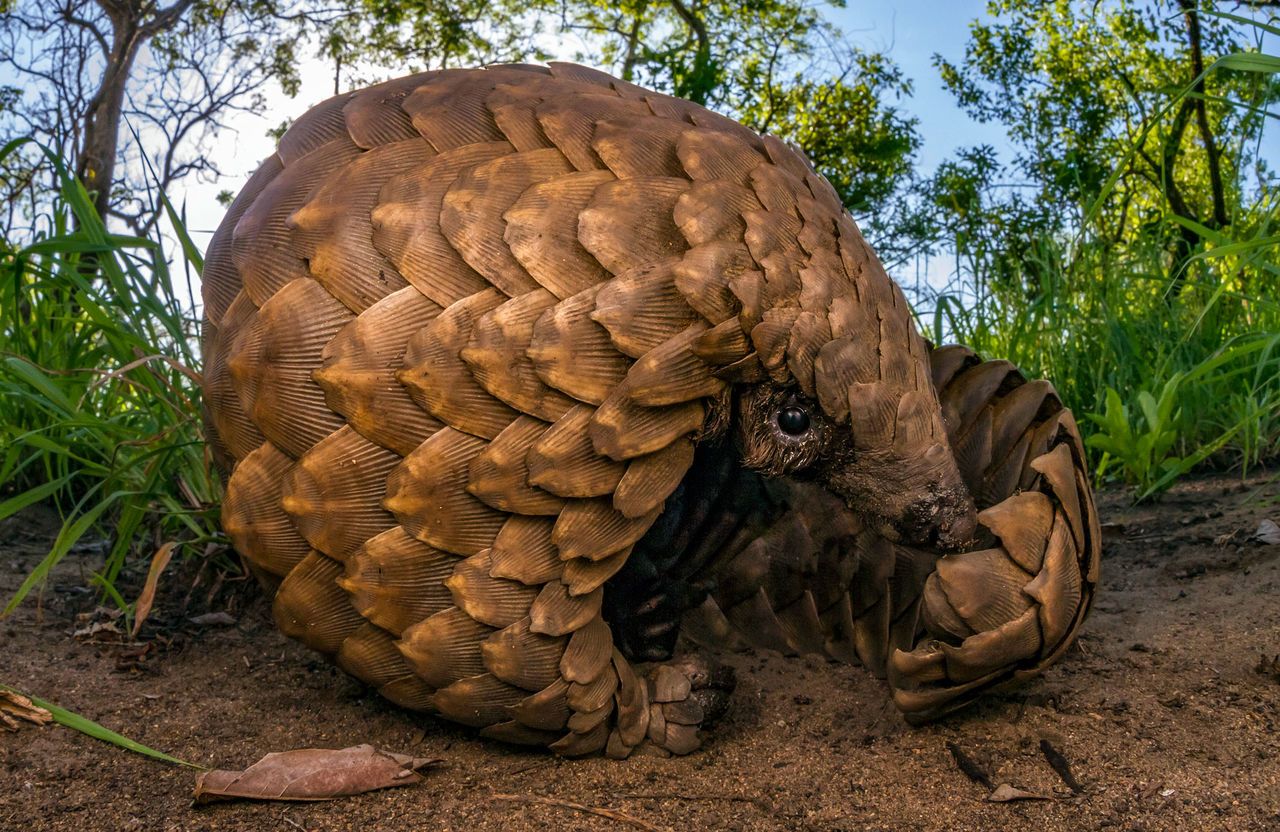To all the wildlife lovers,
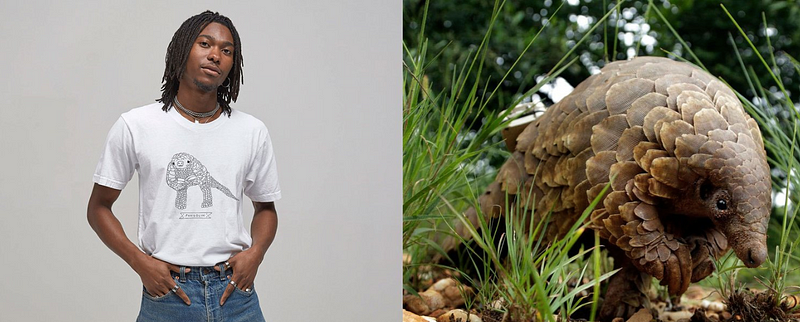
We are so pleased to debut our newest piece benefitting wildlife conservation since our official launch — our I Love Pangolins 100% Recycled Cotton Tee! We have the privilege to do so with a renowned conservation helping to protect Pangolins — fittingly named Save Pangolins!
We decided to select the Pangolin as our next animal for two main reasons:
- A majority of people don’t know that this amazing animal even exists,so how fun is it to learn something new and make an immediate difference in helping them!
- Pangolins are sadly the most trafficked mammal in the world, sought after for this scales and meat.
As you learn about this incredible mammal below, we hope you will be as eager to help them as we are. Let’s start with a ridiculously adorable photo that will leave you feeling unsure if this animal even exists at all:
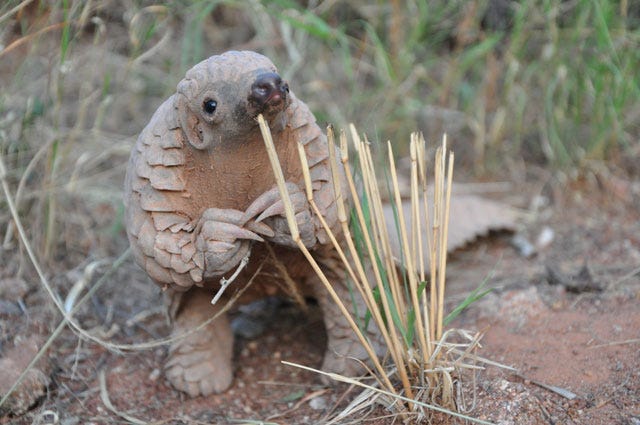
While this little guy may look like an anteater, armadillo, and sloth mixed together — and certainly shares some traits with them — it’s actually of the order Pholidota and is the ONLY species in that order. In fact, it’s closest related order is Carnivora, the order that contains dogs, cats, hyenas, bears and seals.

There are 8 species of Pangolins in all. Four found in Asia (Chinese, Sunda, Indian, and Philippine pangolins) and four in Africa (ground, giant, white-bellied, and black-bellied).
It is believed we are losing one Pangolin every 5 minutes to poaching for their scales and meat.
This is an astonishing rate to lose any life for greed and excessive consumption. If we don’t create more awareness and support soon, we will lose all of the world’s pangolins. In order to educate and raise conservation funds we created the I Love Pangolins Animalia tee with 20% of the profits from every sale donated to our partners Save Pangolins!


Diet:
Pangolins live off ants and termites, they have a massive tongue that is longer than their entire body head to tail, perfectly equipped to probe into ant and termite tunnels. Their long front claws are also great to dig away dirt and make openings in tunnels for their tongue intrusion!
Pangolins are actually quite picky eaters and only eat specific species of ants and termites; this is partially what makes them very challenging to care for in any kind of captivity even when it is a rescue & rehabilitation operation.
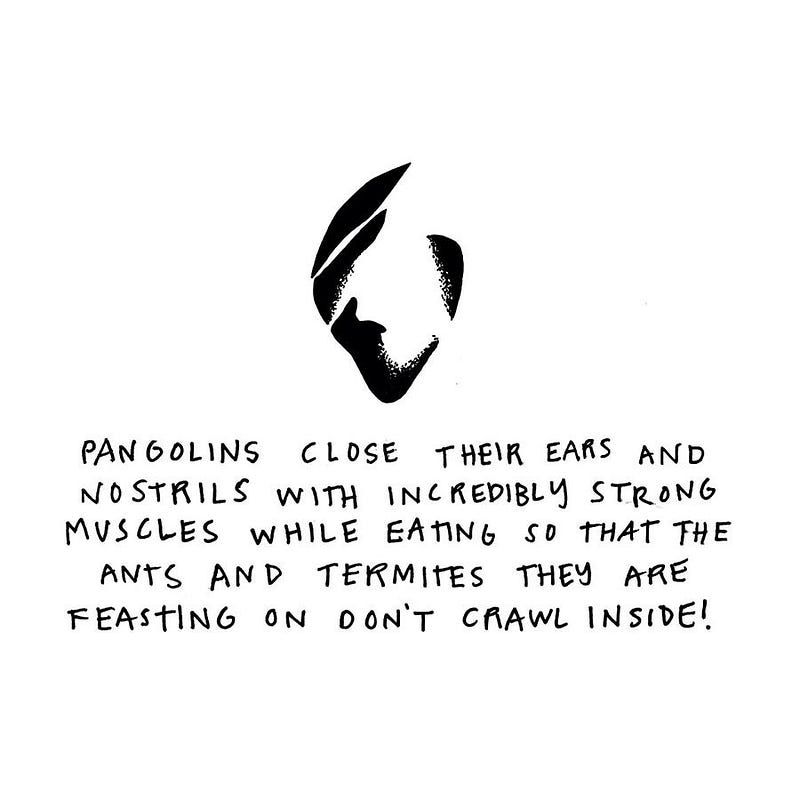
Behavior:
Pangolins are nocturnal animals, meaning they are active and eating at nighttime. They have very poor eyesight but make up for that with an extremely strong sense of smell and hearing. Pangolins are very independent, solitary creatures, and typically only come together to mate. Some Pangolins live in trees and others are ground dwelling and can burrow tunnels underground.
When young, all pangolins love to ride on their mother’s back! It’s quite likely one of the most adorable sights in the entire animal kingdom:

Scales & Defense Mechanisms:
Like many wild animals, what makes them so physically unique and special also leads to their doom when it comes to human greed and obsession with consumption and dominance.
Pangolins are the only mammal in the world completely covered in scales. These scales are made of keratin, the same material our fingernails and hair is made of. In some Asian cultures, particularly Chinese, they believe Pangolin scales are medicinal with special powers, which has led to their poaching and illegal demand, but there is no scientific data to back this claim up!
The natural defense mechanism of the Pangolin is to roll into a ball, making it impossible for predators to get at their soft bellies.
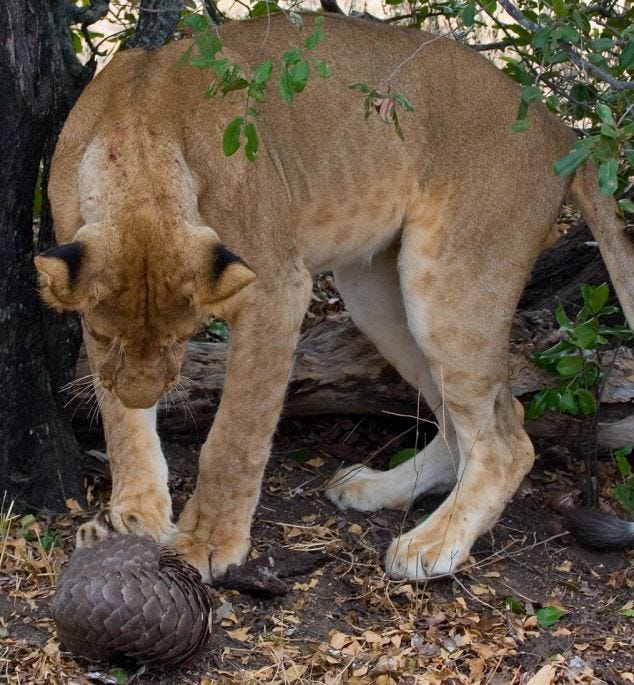
Of course, this defense does not work so well against human poachers, who simply pick up the rolled up Pangolin and toss it in their sack.
Role in the Ecosystem:
Pangolins are ecosystem engineers; they did tunnels and burrows that help aerate the soil and create habitat for other species. Believe it or not, one pangolin can eat 70 million insects in one year — that’s important pest control!
Pangolin Personality Test
A Pangolin just might be your spirit animal if:
- You are a bit more of an Introvert
- When eating pasta or ramen, you like to slurp your noodles
- You are non-confrontational
- You liked piggy-back rides as a child
- You are a bit mysterious to others
- People think they can label you right when they see you but are often mistaken
If you meet a majority of those traits, you just might be a Pangolin! Raise awareness proudly by getting yourself an I Love Pangolins tee to help conserve them!

Meet the benefitting conservation — Save Pangolins!

Save Pangolins envisions a world where all eight pangolin species are safe from extinction. To get there, we must stop the killing, stop the trafficking, and stop the demand. Save Pangolins aims to inspire people to conserve pangolins, change behavior that drives the illegal trade, and increase the capacity of conservation on the ground where pangolins live. They provide expertise and leadership in coordinating global pangolin conservation efforts and run campaigns that engage the public and generate funds for conservation.
Save Pangolins is taking a modern and innovative approach to conservation. They have almost no overhead costs, in order to effectively channel funds directly to their conservation programs:
- Fund conservationists working at the frontlines to save pangolins
- Facilitate coordination and communication among pangolin conservation programs and researchers across the world
- Educate and inspire the public through targeted media campaigns
- Created and manage the Pangolin Crisis Fund
- Belong to the IUCN-SSC Pangolin Specialist Group and help shape stakeholder communications, outreach campaigns, policy, research, and conservation

